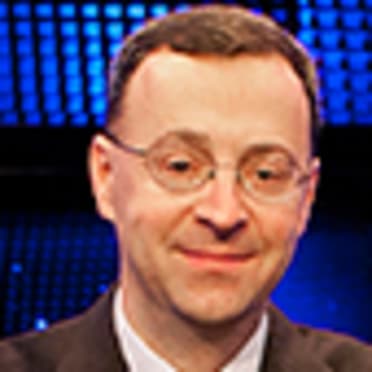Here's how the 12 postseason teams were built
Some teams draft and develop. Some teams rule in free agency. Some dominate trade season.
There is no one set way to build a playoff-worthy roster, which makes diving into the construction of this year’s dozen postseason-bound clubs all the more fun.
Led by 2015 top-five picks Alex Bregman and Kyle Tucker, the Astros once again lead the way with 13 homegrown players on their projected 26-man postseason roster, as defined by those brought in via the Draft or as international signees. That’s three more than any other club this year and spread pretty well between the two processes (eight Draft, five international). That said, it’s the Orioles -- headed to their first postseason since 2016 -- who boast the most drafted players with nine, none bigger than 2019 selections Gunnar Henderson and Adley Rutschman.
At the other end of the spectrum, the Marlins, Rangers and Rays project to have the fewest homegrown players with five apiece. Miami and Tampa Bay lead the way in the trade category, tied with 14 such players each as the Rays hold a slight advantage in collective Baseball-Reference WAR (26.6-20.3) among that group. Comparatively, the Rangers have been better in free agency -- no surprise for a club that brought in Corey Seager, Marcus Semien and Nathan Eovaldi in recent years. Only the Phillies (22.6-21.0) have a higher WAR from free-agent additions in 2023 among playoff teams.
Below is a detailed breakdown of how the 12 clubs were built headed into the 2023 Major League Baseball postseason. If a player was acquired by a team and then re-signed without going to another team, he is listed according to how he was originally acquired. All other players are sorted based on how they were most recently added to their current squads.
AMERICAN LEAGUE
RANGERS (48.6 WAR, 3rd among 12 teams)
Homegrown: 4 (8.1 WAR)
• Draft: 2 (4.0 WAR)
• International: 2 (4.1 WAR)
Free agents: 9 (20.4 WAR)
Trades: 13 (20.1 WAR)
Despite tying for the fewest homegrown players and ranking last in draftees and Draft WAR, the Rangers have the most productive American League playoff roster in terms of overall WAR. Most of their club has been built via free agents and trades. Texas’ two best players (Marcus Semien, Corey Seager) and second-best pitcher (Nathan Eovaldi) were part of its $685 million spending spree on free agents the last two offseasons. The Rangers have pulled off several trades that seemed minor at the time but have paid huge dividends, landing Adolis García (in a straight cash deal with the Cardinals), Jordan Montgomery, Jonah Heim, Dane Dunning, Nathaniel Lowe and Mitch Garver. The internal outlook is improving, with rookie Josh Jung (eighth overall pick in 2019) becoming just the third All-Star signed and developed by Texas since 2004 and Evan Carter (a surprise second-rounder in 2020) providing a late-season spark. Leody Taveras highlights the Rangers’ international efforts.
ASTROS (49.2 WAR, 3rd among 12 teams)
Homegrown: 13 (30.2 WAR)
• Draft: 8 (20.6 WAR)
• International: 5 (9.6 WAR)
Free agents: 4 (2.9 WAR)
Trades: 9 (16.1 WAR)
The Astros have played in the last six American League Championship Series, winning four pennants and two World Series during that time, in large part because of their ability to find and develop amateur talent. No playoff team has more homegrown players or homegrown WAR than Houston. Its two best players, Kyle Tucker and Alex Bregman, were top-five-overall picks in 2015, and the Astros have drafted well in later rounds. They found Jeremy Peña in the third round in 2018 and stole Chas McCormick (21st round, 2017), J.P. France (14th round, 2018) and Jake Meyers (13th round, 2017). They also have unearthed several bargains on the international market, most notably Framber Valdez (who signed for $10,000), Jose Altuve ($15,000) and Bryan Abreu ($40,000). Houston has done very well in trades as well, grabbing Yordan Alvarez from the Dodgers for Josh Fields and Yainer Diaz from the Guardians for Myles Straw, and has executed two different deals for Justin Verlander. It ranks last among postseason clubs in free-agent production, with Hector Neris the only signing of note.
BLUE JAYS (45.0 WAR, 6th among 12 teams)
Homegrown: 8 (15.5 WAR)
• Draft: 6 (11.6 WAR)
• International: 2 (3.9 WAR)
Free agents: 8 (15.2 WAR)
Trades: 10 (14.3 WAR)
Toronto heads to its third postseason in the last four years, and it shouldn’t come as a surprise that that corresponds with the arrival of 2016 second-rounder Bo Bichette’s ascension as a consistent offensive performer. Vladimir Guerrero Jr. was meant to be an even bigger homegrown star, albeit as an international addition, but has come down a bit from being an AL MVP runner-up two years ago. The Jays have supplemented that pair via trades (Matt Chapman, Daulton Varsho) and free agents (George Springer, Kevin Kiermaier), while the emergence of Davis Schneider has been a major development win for the organization. The rotation is mostly built through external additions, led by 2022 free-agent signing Kevin Gausman, while the bullpen is heavier on the homegrown side with Jordan Romano and Tim Mayza leading the charge. Overall, the Jays’ expected postseason roster is spread well across the homegrown/FA/trades buckets, proving there is a balanced way to succeed in the bigs.
TWINS (43.5 WAR, 7th among 12 teams)
Homegrown: 10 (17.8 WAR)
• Draft: 8 (12.9 WAR)
• International: 2 (4.9 WAR)
Free agents: 7 (7.9 WAR)
Trades: 9 (17.8 WAR)
The Twins have long been known as an organization that values homegrown talent and this year is no exception. They are one of three playoff teams with double digits in that category, trailing only the Astros. A healthy Alex Kirilloff and Royce Lewis would give them their first-round picks from 2016 and 2017, but they’ve gotten help from later rounds, too, like 18th-rounder Edouard Julien and his 2.6 WAR. An argument could be made that no trade acquisition has helped a team more than Sonny Gray, who led the team with his 5.4 WAR, though they also got their closer, Jhoan Duran, via trade when he was still a prospect. Seven of the team’s playoff pitchers came via trade.
ORIOLES (42.4 WAR, 8th among 12 teams)
Homegrown: 9 (21.1 WAR)
• Draft: 9 (21.1 WAR)
• International: 0
Free agents: 3 (3.0 WAR)
Trades: 8 (10.5 WAR)
Waivers: 4 (3.1 WAR)
Rule 5: 2 (4.7)
While they don’t lead the way in overall homegrown talent, the Orioles do have more original draftees than any other playoff team. People are going to be talking about the top of the 2019 Draft class for a long time, with Adley Rutschman and Gunnar Henderson combining for 10.6 WAR alone. The O’s may not have made a big splash kind of trade, but Kyle Bradish and his 4.9 WAR sure are making that Dylan Bundy trade with the Angels look smart. Mike Elias and company sure aren’t afraid to use unusual avenues to acquire talent, making four waiver claims (Ramón Urías tops that group with 2.6 WAR this year) and two Rule 5 picks (Anthony Santander had 3.0 WAR in 2023) to build this roster.
RAYS (40.7 WAR, 10th among 12 teams)
Homegrown: 4 (6.1 WAR)
• Draft: 2 (5.7 WAR)
• International: 2 (0.4 WAR)
Free agents: 6 (5.7 WAR)
Trades: 15 (27.9 WAR)
Waivers: 1 (1.0 WAR)
While the Rays have long held a reputation for great farm systems, they’ve done a better job of acquiring talent from outside the organization and developing it internally afterward than drafting/signing and developing, as the above numbers prove. The arrivals of Curtis Mead (originally in the Philadelphia system) and Junior Caminero (originally in the Cleveland system) -- both of whom were acquired while still in the complex levels -- certainly underscore the point. The club’s top three performers by WAR -- Yandy Díaz, Isaac Paredes, Randy Arozarena -- were also brought in by trades, though each had already seen the Majors at the time of their swaps. Zach Eflin was Tampa Bay’s biggest free-agent signing in franchise history last offseason at three years, $40 million, and he proved to be a rotation stalwart during his first campaign in the AL East.
NATIONAL LEAGUE
BRAVES (55.4 WAR, 1st among 12 teams)
Homegrown: 8 (28.4 WAR)
• Draft: 6 (15.5 WAR)
• International: 2 (12.9 WAR)
Free agents: 6 (5.0 WAR)
Trades: 11 (22.3 WAR)
Waivers: 1 (-0.3 WAR)
The Braves lead all playoff teams in WAR heading into the postseason with that juggernaut starting lineup a big reason why, accounting for 36.7 of that 55.4 WAR. While there are only two international players, they’re biggies in Ronald Acuña Jr. and Ozzie Albies, a pair that almost equals the WAR output of Braves draftees on the roster, a group led by Austin Riley. This playoff squad certainly got some help from the A’s via trade, bringing in Matt Olson just before the 2022 season began and Sean Murphy last offseason. That All-Star duo accounted for 11.0 WAR on their own.
PHILLIES (46.3 WAR, 4th among 12 teams)
Homegrown: 7 (12.3 WAR)
• Draft: 4 (7.1 WAR)
• International: 3 (5.2 WAR)
Free agents: 10 (22.5 WAR)
Trades: 9 (11.7 WAR)
Waivers: 1 (-0.2 WAR)
No team used the free agent market more than the Phillies did, with a playoff-leading 10 players coming via that route. Starter Zack Wheeler (4.3 WAR) actually leads that group, ahead of Bryce Harper and Trea Turner. The Phillies used the trade market almost as frequently, a group topped by J.T. Realmuto, whom they then signed to a long-term free agent deal after acquiring him from the Marlins. Brandon Marsh has been nearly as valuable a trade acquisition. A relatively small Draft crop is led by former first-rounder Bryson Stott, whose 4.1 WAR trails only Wheeler on the roster.
DODGERS (45.9 WAR, 5th among 12 teams)
Homegrown: 7 (14.6 WAR)
• Draft: 7 (14.6 WAR)
• International: 0
Free agents: 7 (17.1 WAR)
Trades: 12 (14.2 WAR)
Making their 11th consecutive trip to the playoffs, the Dodgers are the first team in big league history to win 100 games in four straight full seasons. Their success comes from a blended approach, with homegrown talent, free agents and trades contributing equally to this year’s club. Los Angeles combines winning and development better than any franchise, and rookies James Outman, Bobby Miller and Ryan Pepiot -- all draftees -- will play significant roles this postseason. So will former first-round picks Will Smith and Clayton Kershaw. That said, the Dodgers’ two biggest stars came from a trade (Mookie Betts) and the free-agent market (Freddie Freeman). The club works the margins well, originally signing Max Muncy as a Minor League free agent, grabbing Brusdar Graterol in an offshoot of the Betts deal and claiming Evan Phillips off waivers. Though Los Angeles has a track record of finding international talent, no one on its playoff roster came from that source.
BREWERS (41 WAR, 9th among 12 teams)
Homegrown: 7 (11.4 WAR)
• Draft: 6 (10.4 WAR)
• International: 1 (1.0 WAR)
Free agents: 6 (7.7 WAR)
Trades: 13 (21.9 WAR)
With names like Jackson Chourio, Jeferson Quero and Tyler Black looming, there may come a day when the core of the Milwaukee playoff roster is even more homegrown. For now though, half the projected playoff roster came from trades alone, including William Contreras, Christian Yelich, Willy Adames and Carlos Santana – four of the club’s five top players per bWAR. The pitching corps is where the bulk of the homegrown talent can be found entering the playoffs, starting with Corbin Burnes in the rotation and Devin Williams and Abner Uribe (the only international signing of the bunch) in the bullpen. This will be the first Major League postseason for Sal Frelick, Joey Wiemer and Brice Turang.
D-BACKS (38.3 WAR, 11th among 12 teams)
Homegrown: 12 (10.2 WAR)
• Draft: 9 (7.7 WAR)
• International: 3 (2.5 WAR)
Free agents: 5 (4.3 WAR)
Trades: 8 (19.9 WAR)
Waivers: 1 (3.9 WAR)
A first-rounder in 2019, Corbin Carroll (5.5) accounts for more than half of Arizona’s homegrown WAR total, so it shouldn’t come as a huge shock that his likely NL Rookie of the Year campaign coincides with the club’s first postseason trip since 2017. The D-backs continue to look shrewd for acquiring Cy Young candidate Zac Gallen and five-win player Ketel Marte in trades -- the latter of whom since signed a five-year extension in March 2022. Gabriel Moreno -- the Major League leader with a 38.6 percent caught-stealing rate -- could look even better as a trade pickup as he adds more offense moving forward. The most cunning move of all still might have been getting Christian Walker -- last year’s NL Gold Glove winner at first and the owner of back-to-back 30-homer seasons -- on waivers from the Reds in March 2017.
MARLINS (33.9 WAR, 12th among 12 teams)
Homegrown: 5 (8.0 WAR)
• Draft: 3 (5.8 WAR)
• International: 2 (2.2 WAR)
Free agents: 6 (6.5 WAR)
Trades: 15 (19.4 WAR)
The Marlins may have the least productive postseason roster on paper, but they’ll happily make just the fourth playoff appearance in their 31 full seasons of existence. They’re tied for the fewest homegrown players and compensated by tying for the most trade acquisitions. Their best player (National League batting champion Luis Arraez) and pitcher (Jesús Luzardo) arrived via swaps, as did co-closer Tanner Scott and slugger Jake Burger. (So did reigning NL Cy Young Award winner Sandy Alcantara, who’s shut down with an elbow injury). Miami has had much more success signing and developing pitchers than hitters, drafting Braxton Garrett (No. 7 overall in 2016) and Andrew Nardi (16th round in 2019) and landing Edward Cabrera out of the Dominican Republic with a $100,000 bonus in 2015. The Marlins aren’t big free-agent spenders and Jon Berti is their highlight from that avenue of acquisition.


